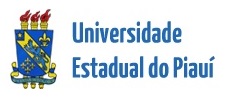DIGITAL DENTISTRY AND ITS APPLICABILITY IN ORAL REHABILITATION
Palavras-chave:
Prosthodontics, Technology Dental, DentistryResumo
This review aims to identify and discuss some technologies applied into Oral rehabilitation highlighting its applicability in Prosthodontics today. The survey of the papers was performed in three different databases: PubMed, SciELO and LILACS using “Prosthodontics”, “Technology, Dental” and “Dentistry” as keywords. Digital technology has become part of today prosthodontics with the probability of most of the procedures being based on the digital techniques in a near future. Some dental professionals have chosen to use it because they felt it was accurate. Some chose it because it was thought to eliminate the laboratory and reduce costs. And again, some feel it is more efficient. Three-dimensional imaging based on radiographic, surface scanning, and photographic, video-graphic data sets enables the capture of diagnostic information and the design of prostheses. Then the prosthesis can be manufactured by computer numeric control systems that automate both additive (3D-printing) and subtractive (Milling) production schemes. Thus, it could be noted by this review that there are many benefits of going digital in Prosthodontics, such as reduced working time, simplified manipulation, better documentation and clarity in communication, enhanced accuracy of diagnosis and treatment planning. The main clinical advantage is the positive impact on the patient experience since they feel and understand that enhanced quality of care is being provided.
Downloads


